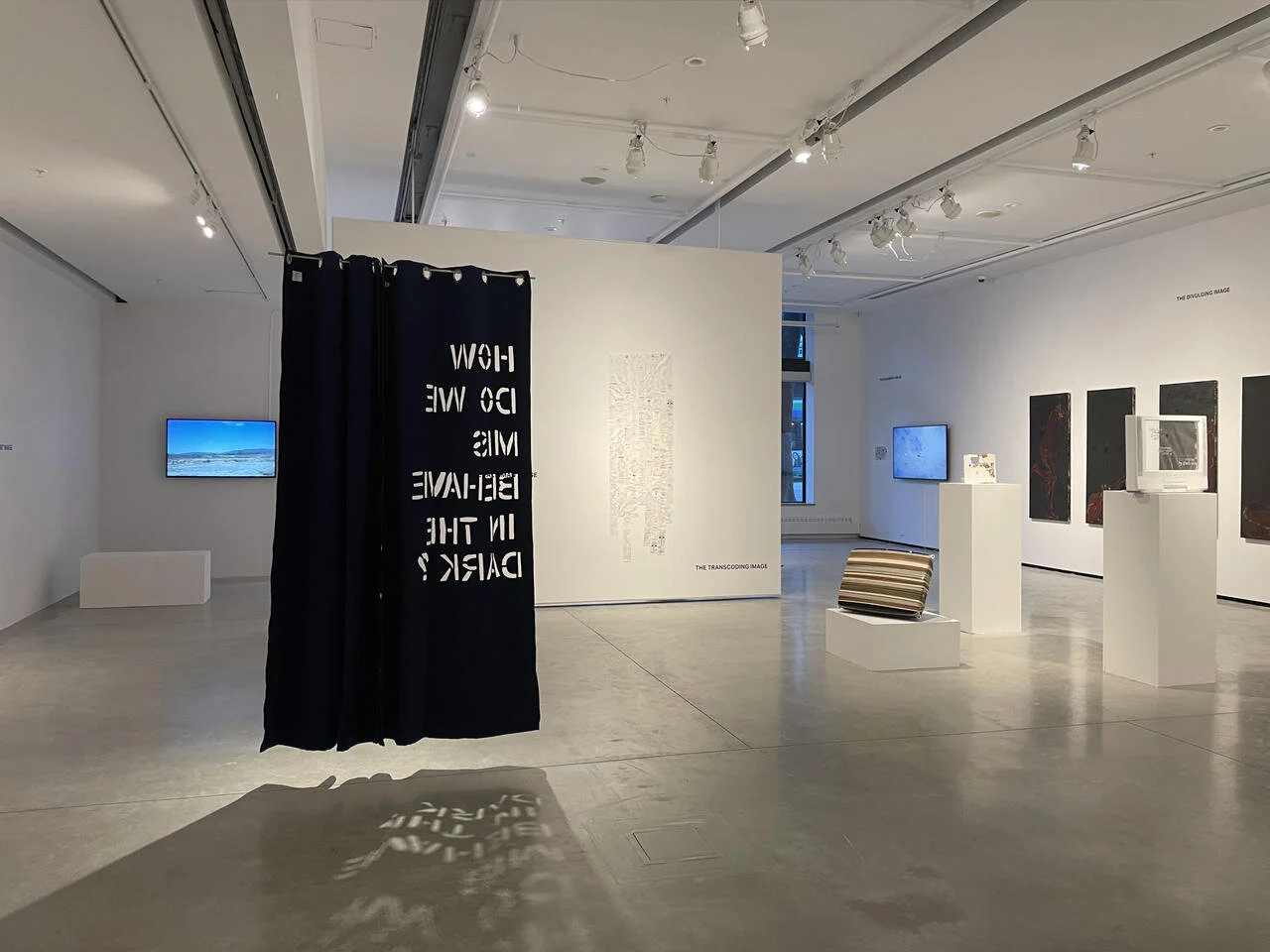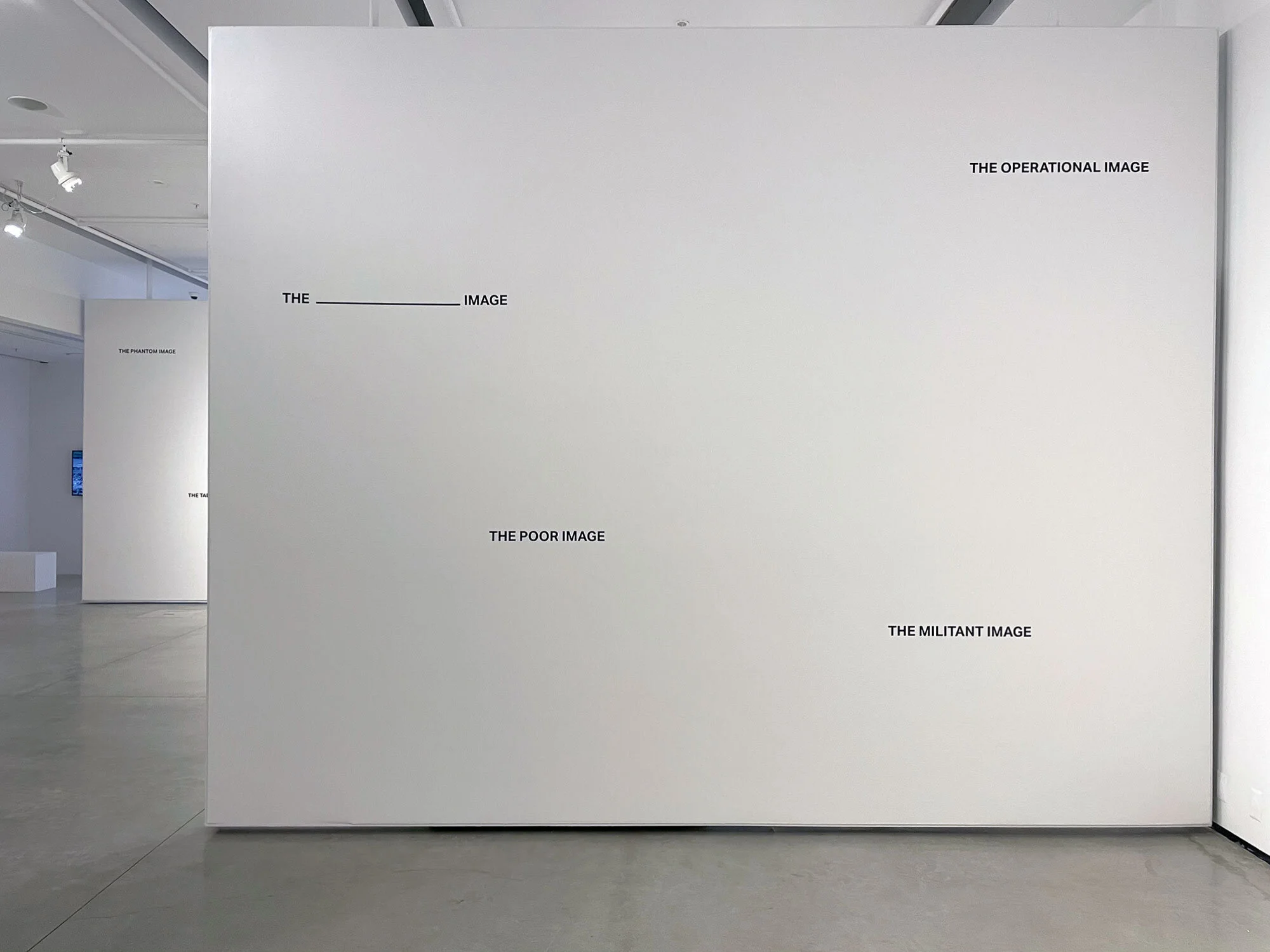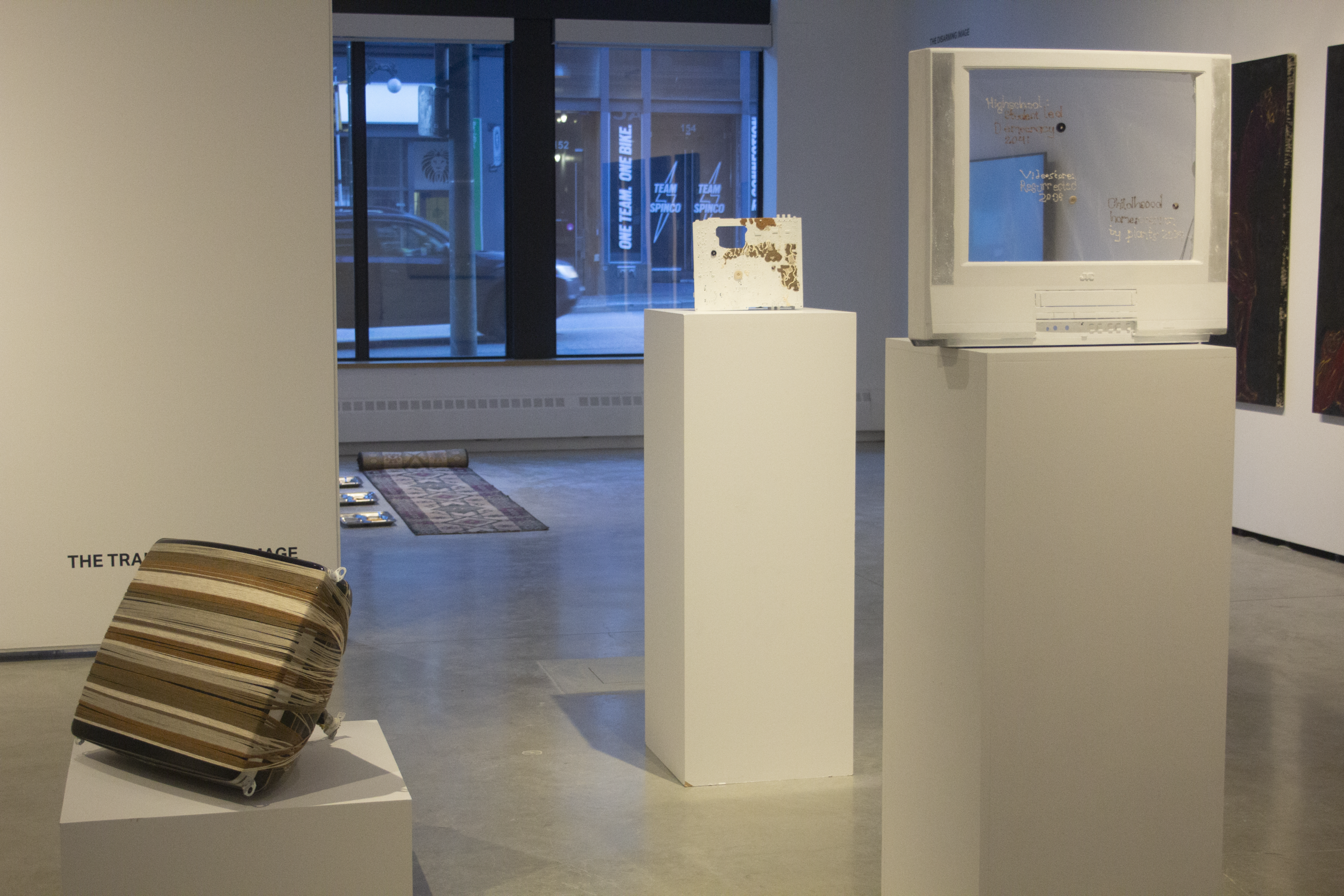BFA Project 2021: Images that Take, Images that Give
March 18 – 27, 2021 | Audain Gallery
Photo credit: Daniel Lin & Paige Smith
“Can art, in fact, mobilize change? And should we be expecting this from art in the first place?”
— Heba Y. Amin
Typically, an image is a thing to be seen: it materializes under our touch and lies still while we admire it, interpret it, and then store it in drawers, folders, archives, or on the Cloud. Images that Take, Images that Give disrupts this seer/seen relation to propose that by engaging with technology, materiality, perception, and language, we can sensitize ourselves to the ways that images have agency. If the artist’s role is to produce and circulate images, the works in this exhibition consider instances where images might cry out and retaliate.
Verbing is a linguistic trick that turns nouns into verbs to conceive of new movements, gestures, and procedures. By combining various actions with the word “image,” we can begin to imagine images operating, seeing, transcoding, hosting, migrating, reclaiming, disarming, and militarizing. Using the exhibition as a site of research, we have selected and arranged these agencies as entries in a glossary, each offering its own course of action to change the ways we see.
A perceptual shift can occur on multiple levels, as images both mobilize radical action and articulate new kinds of subjectivities. Images with agency rearrange our conceptions of the world and drive us toward cultural change. But they also call attention to neglected compositional elements, disturb otherwise comfortable scenes, or make us aware of what is left just outside their frames.
The artists featured in Images that Take, Images that Give aim toward an awareness — and sometimes an empathy — for the ways that digital technologies “see.” When we cannot gather in physical spaces, these technologies host and mediate our means of being together, so it is urgent that we examine and visualize their sensory systems. Cellphones, laptops, drones, and all other machines that incorporate digital cameras carry out their “seeing” via binary code, so what emerges onscreen is the result of a series of translations that are only composed into pixels for our eyes. This leaves us wondering who (or what) is doing the taking and what (or who) is given up along the way?
These lovely words were written by my classmate Sena Cleave for our exhibition’s brochure. You can find the exhibition brochure here.
Photo credit: Daniel Lin & Paige Smith
Assembling an exhibition:
Images that Take, Images that Give investigates the agency of images, as well as the tactics and technologies artists use to create, produce, and circulate them. The third-year visual arts cohort — alongside Egyptian artist Heba Y. Amin, professor Sabine Bitter, and MFA candidate Aakansha Ghosh — have developed artworks related to themes of resistance, control, mapping, and language. As a site of research, this exhibition seeks uncertainty and curiosity to support new ways of seeing.
Each work in the exhibition contributes to a glossary of terms that describes the agency of images within frameworks such as archives, surveillance, technology, and perception. These frameworks can support a reciprocal relationship between images and cultural change, where images both spur radical action and articulate new kinds of subjectivities. The artists seek what lays beyond the tangible and rational to explore new ways of coming together, although for now our bodies can only be together in restricted ways, full of caution. Because this class project has been mostly developed remotely, via technologies like email and Zoom, examining and critiquing these digital frameworks is particularly urgent.
Exhibition brochure, click to see full PDF.
Video documentation of exhibition:
Thankfully, our exhibition was able to safely be open to the public even during the pandemic, however with limited capacity. In order to both document and virtually present the exhibition, two videos were filmed from within the gallery space. The first video was produced by myself and my classmates to creatively represent visiting the gallery space, and the second video was produced by SFU Galleries as a traditional gallery walk-through, guided by our professor Sabine Bitter.
Video credit: Sena Cleave, Sofia Grace, Yunze Xie (David), Daniel Li and Paige Smith
Video credit: SFU Galleries
Exhibition panels:
In conjunction with our exhibition, we had two panel discussions, the first about developing the framing tool of a speculative glossary, and the second about how artistic practices advance methodologies for thinking through digital images.
Both videos were presented by SFU's School for the Contemporary Arts and the Audain Visual Artist in Residence. Co-presented as part of Heba Y. Amin’s solo exhibition When I see the future, I close my eyes curated by Anthony Downey at the Mosaic Rooms, London.
Exhibition website for glossary terms:
Yet another way to digitally engage with our exhibition is through our exhibition’s custom website. The interactive website has lovely photo documentation of the exhibition and the individual artworks, plus each artist’s glossary term and definition. My glossary term was ‘the phantom image’ and its definition can be found here.
Select press about the exhibition Images that Take, Images that Give:
2021 The Peak, “A look into the practices of visual art students and the upcoming Audain shows,” Kaila Bhullar
2021 SAD Mag Blog, “Explore Image Agency in Exhibit: Images that Take, Images that Give,” Teresa Donck
2021 Withintensions, “Review of Images That Take, Images That Give (2021),” Natalie Chan (page 8)
2021 Indi Jaswal Facebook page, “ਕਨੇਡਾ ਪੁਲਿਸ ਚ ਕੰਮ ਕਰਦੇ ਪੰਜਾਬੀ ਭਾਜੀ ਦੀ ਕੁੜੀ ਤੇ ਉਸਦੀ ਸਹੇਲੀ ਨੇ ਕਿਸਾਨਾਂ ਲਈ ਯੂਨੀਵਰਸਿਟੀ ਚ ਪ੍ਰਦਰਸ਼ਨੀ ਲਾਈ,” Indi Jaswal
Photo credit: Daniel Lin & Paige Smith






